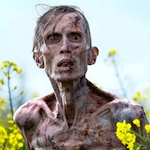 I went and saw Danny Boyle’s 28 YEARS LATER on opening day, two-plus weeks ago. I’ve seen a few other movies I’ve enjoyed since then, but I think this one might’ve dug into me a little deeper. It’s odd and imperfect, but that’s kinda what I like about it. When I thought about a new followup to 28 DAYS LATER and 28 WEEKS LATER I thought “okay, yeah, that could be pretty cool.” But it turns out to be something way more interesting than what I pictured.
I went and saw Danny Boyle’s 28 YEARS LATER on opening day, two-plus weeks ago. I’ve seen a few other movies I’ve enjoyed since then, but I think this one might’ve dug into me a little deeper. It’s odd and imperfect, but that’s kinda what I like about it. When I thought about a new followup to 28 DAYS LATER and 28 WEEKS LATER I thought “okay, yeah, that could be pretty cool.” But it turns out to be something way more interesting than what I pictured.
I enjoyed going in with no clue what the shape of the story was gonna be, but I guess you’re agreeing to forgo that option by reading this, so here goes. It’s kind of like two chapters (or connected short stories?) with a wraparound. The chapters both start at Lindisfarne, a small island of zombie-apocalypse survivors that can only be accessed via a causeway during low tide. They have a rule that you can leave the island but if you don’t return nobody is allowed to go looking for you. You’re on your own. As part of a rite of passage – but a couple years ahead of schedule – 12-year-old Spike (amazing newcomer Alfie Williams) is taken to the mainland by his father Jamie (Aaron Taylor-Johnson, SAVAGES) to bow-hunt his first zombie.
Well, I say zombie, but they usually call them “infected,” because they’re not undead, they’re victims of the rage virus. But the word zombie does get used once, which I really need to tell my friend Rich about. He used to insist that these particular zombie movies were not zombie movies because their zombification was spread by a virus, even after I pointed him to a podcast where Jeff Goldsmith said the same thing to screenwriter Alex Garland, who basically said well okay that’s fine but I was trying to write a zombie movie.
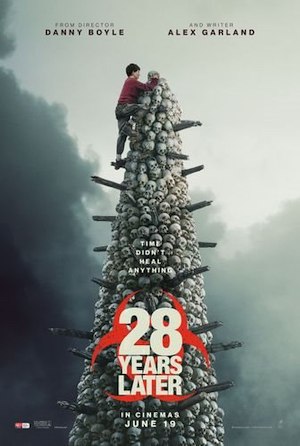 In 2002 there was a big debate about fast zombie vs. slow zombie. Seems ridiculous now. I mean yeah I prefer slow, but we got six movies of that out of George Romero (seven if you include the NIGHT OF THE LIVING DEAD remake he wrote and produced), plus 11 seasons of The Walking Dead, 16 seasons of its spin-offs so far, we’ve had plenty of representation. And even back then I couldn’t help thinking that RETURN OF THE LIVING DEAD did fast zombies way before Boyle and I never once heard some chump try to question its validity as a canonical zombie work, at least not for that reason. You can do things in different ways, is one of the things I’ve noticed about movies. Different things can work. Including zombie speeds.
In 2002 there was a big debate about fast zombie vs. slow zombie. Seems ridiculous now. I mean yeah I prefer slow, but we got six movies of that out of George Romero (seven if you include the NIGHT OF THE LIVING DEAD remake he wrote and produced), plus 11 seasons of The Walking Dead, 16 seasons of its spin-offs so far, we’ve had plenty of representation. And even back then I couldn’t help thinking that RETURN OF THE LIVING DEAD did fast zombies way before Boyle and I never once heard some chump try to question its validity as a canonical zombie work, at least not for that reason. You can do things in different ways, is one of the things I’ve noticed about movies. Different things can work. Including zombie speeds.
Anyway I’m happy to report that the infected fast zombies have evolved into something cooler by now. The one pictured at the top here (Angus Neill as “Emaciated Infected”) is the stand out, but really they found a whole bunch of twiggy, strange looking people with some really creepy, jerky ways of moving. They’ve also added some pretty novel new zombie types. There are pregnant zombies. There are these fat ones that crawl around in the woods eating worms, they’re basically like human boars, I think, but not too threatening. (I wonder if they can sniff out truffles?) But there’s a type you have to get the fuck away from that Jamie calls “Alphas.” These guys are bigger and smarter, can withstand a whole bunch of arrows, and will patiently stalk you. You just see a big hairy naked dude standing across a field, watching you like a stalking tiger. Close up he looks like a pro wrestler, and he’s ripping people’s heads off like a Predator, running after them with his giant dick flopping around. Which I suppose is better than the other option.
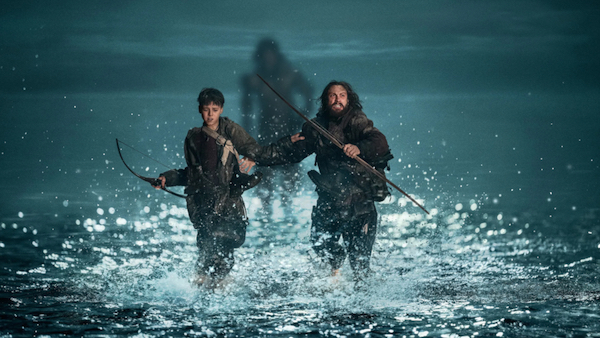
There are some thrilling encounters and a dreamy close call running across the causeway at night, and the story really swerves when they return safely home. It’s late but the town throws a big celebration of Spike at the pub. The scene had me thinking how beautiful it is that even after all this people can still get together, get drunk, play music, and sing Neil Diamond songs. The kid would disagree with me – he’s really uncomfortable with it all. He thinks his dad is pumping him up too much, telling tall tales about his achievement. He figures he was no hero, he missed most of his shots. And then he sees his dad sneak into an alley with the school teacher Rosie (Amy Cameron) and poke his head under her skirt.
I think Jamie is a good character because he seems like much more than his flaws. He’s really good with Spike when he’s on the trip, very encouraging, and genuine when he’s telling him it’s not his fault they got trapped, that he was shooting better than many adults. Even his unforgivable sin of cheating on his dying wife Isla (Jodie Comer, THE BIKERIDERS) plays to me more like a sad human weakness – seeking escape from a horrible situation – than a conscious betrayal.
For what I consider the second major story of the movie, Spike leaves the island again, this time bringing his mother (who has some form of dementia), because he’s learned that a mysterious man called Kelson (Ralph Fiennes, THE MENU), who his father is afraid of, used to be a doctor, so he hopes he can get help for his mother. Along the way he protects her from the different types of infecteds, teams up with a Swedish soldier named Erik (Edvin Ryding), who’s been shipwrecked and can never leave because of the quarantine.
For a bit there it feels like some kind of allegory or myth, when there are three characters together who have entirely different relationships with the world of before. Isla grew up in the old world, but may not remember much of it because of her “confusion.” In the sequel’s funniest twist, the rest of the world has stayed zombie-free and gone on without the Brits. To quote THEY LIVE, “It figures it would be something like this.” So Erik has lived a life of smart phones, e-commerce and botox that he now can never return to, while Spike has only lived on his island for 12 years, so just seeing an open field is a huge novelty to him. He has no clue what the fuck Erik is even talking about. Then this trio encounters a miracle together, and not all react the same.
Later they meet Dr. Kerson, who has spent many years without human interaction, just burning corpses, cleaning bones and constructing art out of them. But also he’s happy to try resuming his private practice. He goes right back into that bedside manner, like it’s riding a bicycle.
This could very well be taken away by the sequel, but as it exists now the treatment of Dr. Kerson and the Bone Temple is really impressive. What he’s up to seems terrifying, but he seems Mr. Rogers nice, so you keep waiting for the other shoe to drop. He’s gotta be a scary dude who thinks he’s nice but he’s up to something fucked up, right? At first when they walked through these columns constructed of bones and skulls and the score was telling us it was beautiful I thought even that might be a trick. But the movie allows us to continue believing that in fact Dr. Kerson is right, he’s the only one honestly facing the cost of this pandemic and its victims. He wasn’t gonna leave bodies around to rot, he gave them a ritual, a burial, and a monument.
And that’s where 28 YEARS LATER really surprises. The climax of the movie isn’t about fighting zombies, it’s about accepting mortality. SPOILER SPOILER SPOILER. Dr. Kerson tells Isla that he believes she has cancer and that she’ll die soon. It seems to confirm what she already believed, and there is a beautifully true moment where she gives Spike a sort of sad half smile, which I took to be saying it’s okay, honey. I have accepted this. It’s okay. At first I didn’t buy her seemingly abrupt decision to be euthanized. Yeah, her life at home is miserable, but she has been somewhat cogent during most of this journey, so it just seems weird for her to think it’s better to get it over with than to give her son a little more time with her. Maybe it works better on a symbolic level than a logical one. But maybe she felt Spike had a better chance of making it home without her. If she can accept it I guess I should be able to.
This doesn’t seem to be anyone’s interpretation, so I don’t think it’s correct, but I also considered whether the cancer was just a story to tell the kid, that in fact the doctor felt she had some sort of slow rage infection. The only evidence to support this is the scene where, while the kid was asleep, Isla saved him from an infected by savagely bashing its head against some rocks. Maybe in this world as your body is eaten away by cancer you are slowly taking on the rage virus? Or maybe human instinct to protect a child in danger isn’t that different from the rage virus. I don’t know.
A zombie movie got me to cry once – it was TRAIN TO BUSAN. This one got a tear out of me, for similar reasons – dead mom stuff. There’s a trope in zombie and vampire movies (for example SINNERS had a good spin on it) where someone has to defend themselves from someone who has turned into a monster and they say it’s okay because that’s not the person anymore. Jamie says something like that during their hunting trip, when Spike feels bad about shooting infecteds – they’re not themselves anymore, they don’t have a mind, they don’t have a soul. It’s a sensible thing to tell his son, and himself, but in this story it might make us wonder where to draw the line on Isla not being herself, not having a mind. In my darkest thoughts when my dad lived in memory care, pacing up and down a hall all day, not seeming to remember anyone or anything, I wondered how different he was from a spider – unknowable, acting on instinct. In a world of zombies I would’ve had a more direct comparison.
What’s interesting here is I think it looks at this question in the more generous way. She may forget who she is, nevertheless she is to be treated with dignity, and therefore maybe the infected should be too. They aren’t monsters, they’re sick people. Only the Swede ever calls them zombies, because he comes from the outside world.
I kinda hated the trailer for featuring some old timey fucker’s voice that’s like nails on a chalkboard to me. So it was funny to read that this recording of a Rudyard Kipling poem is so known to be irritating that the U.S. military uses it in training soldiers to withstand torture. Someone who had experienced the training recommended it to the trailer editor, and it impressed Boyle so much he put it in the movie. Hey thanks guys, great work torturing us.
In the movie the poem about endless marching plays over Jamie and son embarking on their trip, intercut with flashes of propaganda films. Initially it through me off, comparing that tradition to indoctrination, because many years of zombie apocalypse movies and TV have told us that learning to kill zombies and scavenge are necessary parts of surviving. Later in the movie I started to think there was something to it, though – there seems to be an alternative demonstrated by Dr. Kelson, who drugs attacking zombies with darts instead of shooting them through with arrows, gives the scariest Alpha zombie (6’ 9” MMA fighter Chi Lewis-Parry, GLADIATOR II) the name Samson, and honors the dead including the infected in his temple. Spike says “He’s not crazy, he’s a kind man.”
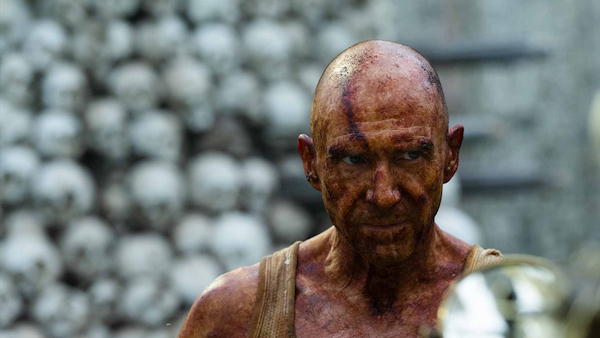
Dr. Kelson is also a contrast to Erik blurting out that he regrets saving the lives of Spike and his mom after he realizes they can’t help him in return. Uh, thanks alot, soldier.
There’s something to the different names for the big, smart zombies. “Alpha” of course seems to reference the discredited wolf theory. They used to think wolves followed a dominant “alpha male,” until they realized that only the ones in captivity did that. Prisoners, basically. When dudes say they want to be an alpha they’re basically saying they want to be the guy in the prison that gets to rape everybody. I mean you don’t want to be the other guy either, I get that, but it’s just a ridiculously unhealthy thing to be aspiring to in life, is my point. Even confirmed dick soldier Erik knows that. He thinks the term sounds like a Wall Street bro, he prefers “Berserker,” which he thinks sounds cool, like a viking. His own shitty archetype to strive for. Spike seems eager to choose a different type of role model.
We don’t even have to get into the Brexit or COVID parallels to know that there’s a whole lot to chew on in this movie. And yet, to my surprise, one of the things my mind keeps coming back to is the visual style. Returning cinematographer Anthony Dod Mantle is a pioneer of using consumer level digital cameras artistically, having shot THE CELEBRATION and JULIEN DONKEY-BOY before 28 DAYS LATER. With Boyle’s SLUMDOG MILLIONAIRE he won the first Best Cinematography Oscar for a film shot digitally. He also worked with Garland separately on DREDD. Despite that long history this one has the feeling of hungry new filmmakers excited about the possibilities of small, lightweight cameras with different image qualities. It was shot mostly on modern iPhones, with lots of fancy rigs, and somehow it looks great. There’s an enthusiasm for unusual camera angles and movements, without overdoing it or repeating too much. There are primitive smears and a red-tinted, highly pixelated nightmare, but also vivid, eye-popping colors in nature, and painterly night time lighting that strikes me as more like a Michael Mann approach than a Dogme one.
Meanwhile, editor Jon Harris gives it a lively, collage kind of feel with bits of stock footage, freeze frames and musical montages that seem very fresh in a zombie movie, and I love the music by Young Fathers, who Wikipedia says is a “Scottish progress hip hop group,” but I would’ve described the score as “drone rock” or something.
This is planned to start a new trilogy, with part 2 THE BONE TEMPLE already filmed by director Nia DaCosta (LITTLE WOODS, CANDYMAN, THE MARVELS). I’m very curious about that, and in the long run it might really work out, but in its current state as a stand alone film, these plans add some awkwardness to part 1. The prologue set in the 28 DAYS LATER time period (and shot similarly) seems fine until it only pays off in a final scene that seems outrageously out of place. It involves wacky blond dudes in track suits doing parkour (I’m not joking) and already seemed crazy to me before I read that British people understand it as a reference to a famous child molester? Anyway, it would’ve (somewhat) made sense as a Marvel style post credits scene, but I imagine Boyle felt he was above that, so instead he upended his very emotional ending by continuing into a wacky record scratch joke that’s basically meaningless until we see where they’re going with it.
In a way this feels like a TV pilot. I mean it’s very cinematic, I’m not saying otherwise, it’s just that it sets up so many things about this world: this island community, its rules and traditions and some of the people in it, the problems in this family, the idea that some of the adults from the colony work in the mainland, the aforementioned different zombie types, the doctor, the quarantine patrols, a cult that’s hinted at. Most of these things feel like they’re being set up to be explored later more than they feel like they’re things delved into in this movie. But they also work just as background to a pretty intimate story about this kid and what he’s going through with his parents.
This was one of those movies where I enjoyed the whole experience of watching it but when it ended I felt like I had to think about it more to be sure what I thought of how it all fits together. Well, I have done that. It’s kind of a misshapen movie, but I think there’s some greatness about it. For a movie in a genre this overdone to feel this fresh and exciting and vibrant is really something.
APPENDIX: Some of the zombie movies since 28 DAYS LATER that I have liked
DAWN OF THE DEAD (2004)
LAND OF THE DEAD (2005)
SHADOW: DEAD RIOT (2006)
ZOMBIELAND (2009)
WYRMWOOD: ROAD OF THE DEAD (2014)
THE GIRL WITH ALL THE GIFTS (2016)
PRIDE + PREJUDICE + ZOMBIES (2016)
TRAIN TO BUSAN (2016)
SEOUL STATION (2016)
BLOOD QUANTUM (2019)
PENINSULA (2020)
ARMY OF THE DEAD (2021)
WYRMWOOD: APOCALYPSE (2021)
I also enjoyed most of the RESIDENT EVIL movies but not necessarily for the zombies. And I should try DIARY OF THE DEAD and SURVIVAL OF THE DEAD again, but I don’t know.



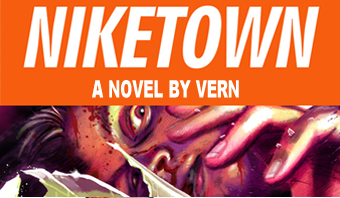
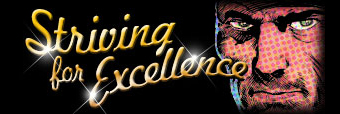
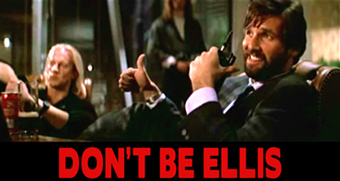












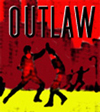






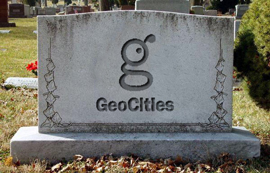
July 7th, 2025 at 7:19 am
For anyone curious about the British child molester referenced in the final scene: https://en.wikipedia.org/wiki/Jimmy_Savile